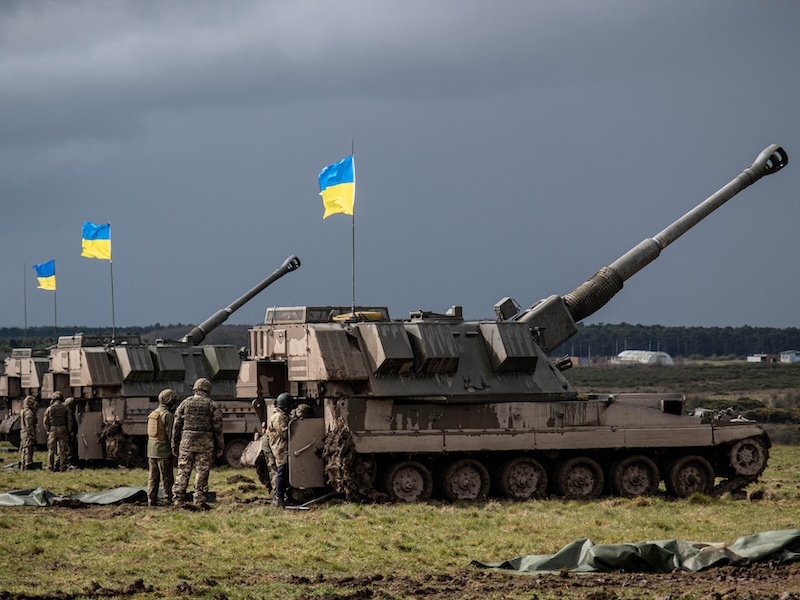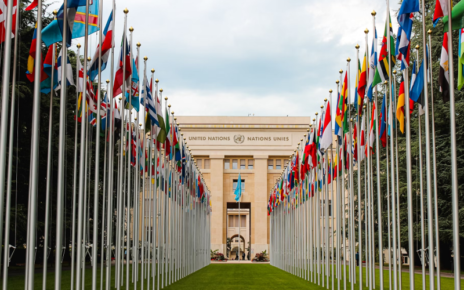One overlooked aspect of NATO’s activities is the alliance members’ commitment to conventional arms control. The NATO 2022 Strategic Concept, adopted at the Madrid Summit, highlights the importance of arms control and disarmament for global security
Conventional arms control measures include efforts such as the reduction of troops or even the total abolition of armed forces, as seen in Costa Rica; reductions in military spending; responsible arms transfers; improved procedures for the management of weapons and ammunition; and a commitment to the ban on the use of certain conventional weapons that cause indiscriminate harm to civilian populations, such as landmines, explosive remnants of war, and cluster munitions.
The rapid deterioration of the security environment following Russia’s unprovoked full-scale invasion of Ukraine marked a significant setback for arms control efforts on a global scale. Global military spending grew dramatically, reaching $2.44 trillion in 2023, a 6.8% increase in real terms from 2022. Several states withdrew from arms control agreements, including the Conventional Armed Forces in Europe (CFE) Treaty. Some states, like Canada, chose to strengthen their armed forces.
The existence of an armed conflict does not mean that states’ obligations in the areas of arms control cease; quite the opposite — arms control measures should be implemented and enforced even more strictly. During wartime, the danger of the irresponsible use of weaponry increases, and the proliferation of arms within society can contribute to higher levels of violence beyond the conflict zone and even after the conflict ends.
In the context of the Russian invasion of Ukraine, NATO member states have implemented several significant arms control measures, including:
– Sanctions on exporting arms and related materials to Russia and its allies. Russia has been on the EU arms embargo list since 2014 and is individually sanctioned by countries such as the U.S., UK, Canada, and many others. Through these sanctions, most NATO member states aim to restrict Russia’s military capabilities, which rely heavily on Western technologies. Russia has developed sophisticated schemes to evade sanctions, continuing to import Western components through intermediaries in third countries, such as China, Turkey, and Taiwan. Significant efforts of an international arms control community focus on meticulously documenting remnants of missiles, drones, and other Russian weaponry, identifying foreign components, and publicizing these findings to alert military producers and Western governments to the consequences of irresponsible exports.
– End-use controls of arms transfers to Ukraine. Before authorizing the arms transfer, exporting states must ensure that their weaponry will not be used for human rights violations or purposes not specified by the importing state. One well-known case of military end-use control in the context of the Russian invasion involved erstwhile restrictions by some NATO member states on the use of their long-range weapons systems and equipment within Russian territory by Ukrainian forces. These restrictions had applied to Storm Shadow missiles and ATACMS. Although, from a military perspective, it would have been advantageous for Ukraine to conduct strikes against strategically important targets in Russia earlier, Ukraine’s allies lifted such restrictions gradually to avoid escalation. Non-compliance with these restrictions could have jeopardized Ukraine’s partnerships with key military aid donors and negatively impacted the situation on the battlefield.
– De-mining and explosive ordnance disposal. Currently, Ukraine is the most heavily mined country in the world, with an estimated 23% of its land at risk of contamination from landmines and unexploded ordnance. Additionally, the Black Sea—a key route for transporting Ukrainian commodities—is contaminated with naval mines. The Demining Capabilities Coalition, established within the Ukraine Defense Contact Group, is co-led by Lithuania and Iceland. It aims to support Ukraine by providing financial assistance and equipment needed for landmine clearance. Furthermore, three NATO member states—Turkey, Romania, and Bulgaria—have joined forces to conduct mine-clearing operations in the Black Sea.
– Preventing weapons diversion in Ukraine. Ukraine is now the world’s fourth-largest importer of military goods. With large quantities of weapons, equipment, and ammunition arriving in the country, controlling the proper distribution and use of these items poses a significant challenge. Weapons diversion—the transfer of military technology and knowledge from an authorized user to an unauthorized one—can be especially damaging, potentially contributing to the rise of armed violence in remote regions. To address this, NATO member states have supported Ukraine in implementing robust procedures for controlling military transfers, focusing on digitalizing records and enhancing transparency of military procurement processes. The United States has conducted several visits to observe storage conditions and review systems in place to ensure the proper use of weapons. So far, there has been no evidence of weapons diversion or illicit trafficking of Western supplies outside of Ukraine. However, ongoing attention and control by both Ukrainian authorities and Western allies are essential to prevent any negative scenarios.
While the conventional arms control aspect of NATO’s activity may seem secondary, it is integral to all considerations regarding military transfers, sanctions regimes, and future battlefield developments. The arms control framework emphasizes the importance of responsible weapons use during armed conflict, ensuring that civilians are protected to the greatest extent possible from the current and future consequences of the war.
Photo: AS90’s lined up ready to fire. The AS90 is a 155 mm mobile artillery system capable of firing up to 6 rounds a minute. Courtesy of NATO.
Disclaimer: Any views or opinions expressed in articles are solely those of the authors and do not necessarily represent the views of the NATO Association of Canada.




